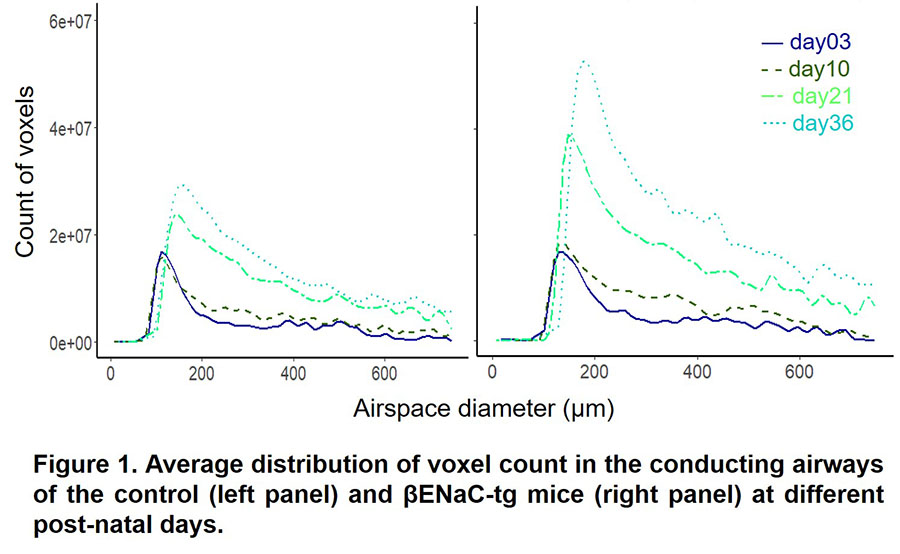Abstract
Cystic fibrosis (CF) is characterized by thick airway mucus obstruction and enlarged small airways soon after birth. We hypothesized that CF might also influence early post-natal development of the conducting airways (CA). We aimed to compare the airspace diameters of CA in ?ENaC-transgenic (tg) mice with CF-like lung disease and control littermates at different stages of lung development (postnatal day (pnd) 3, 10, 21 and 36), by applying synchrotron radiation-based X-ray tomographic microscopy (TOMCAT, SLS, Paul Scherrer Institute, Villigen, Switzerland). Acquired images were reconstructed, segmented and airspace diameters were calculated with the pi2 thickness map algorithm. Finally, the CA were extracted based on their morphology. When comparing the total voxel count of the CA, we observed 20% larger CA already at pnd3 in mice with CF-like lung disease which increased until adulthood to 60% (Fig. 1). Because our mice did not show any histological signs of infection, we conclude that the enlarged airspaces detected in ?ENaC-tg mice soon after birth are likely the effect of prenatal mucus obstruction and pulmonary overextension on fetal branching morphogenesis. The progression of the phenotype is possibly due to further mucus obstruction and inflammation.
